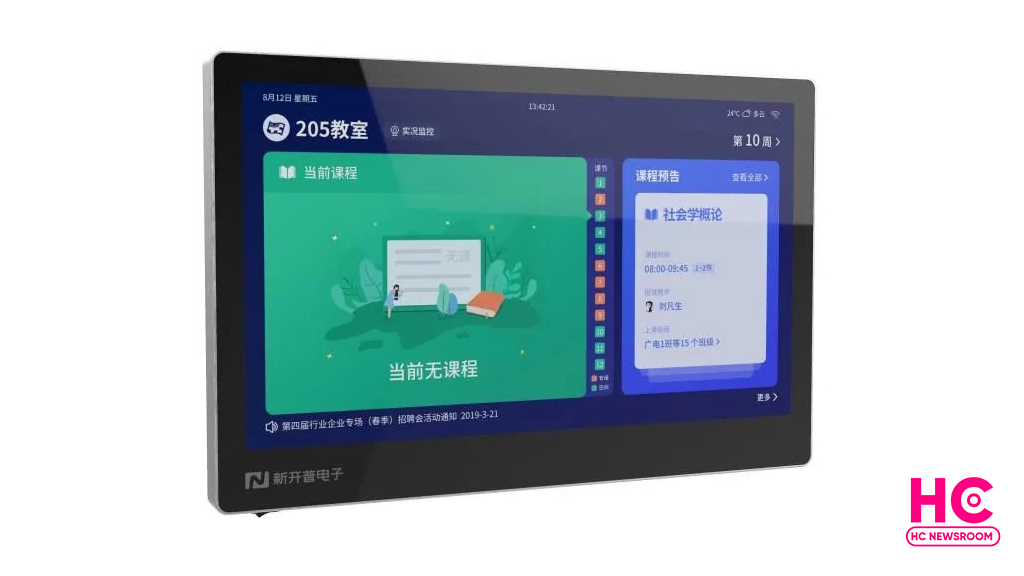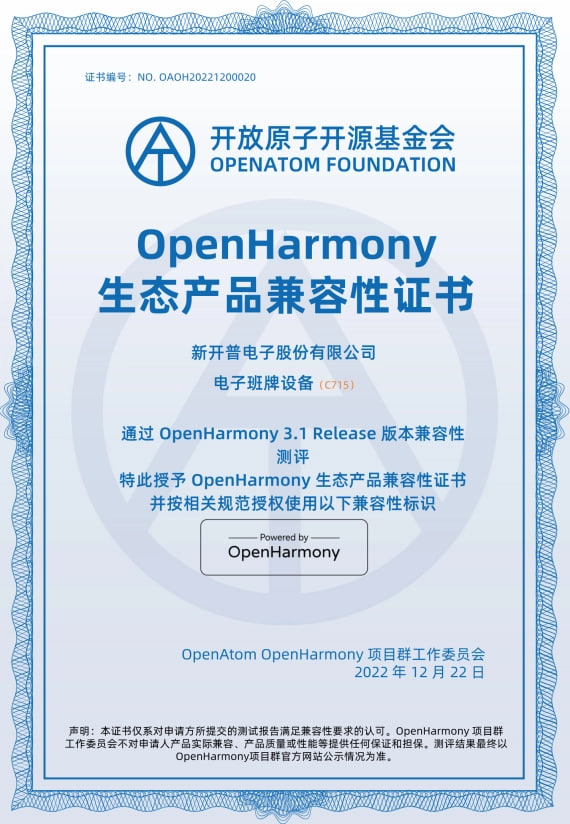OpenHarmony
OpenHarmony now supports electronic class card with 21.5-inch screen

Recently, open source HarmonyOS, OpenHarmony announced support for a new electronic class card device. It is developed by Chinasoft International Co., Ltd. and New Cape Electronics Co., Ltd to receive OpenHarmony ecosystem compatibility certificate.
The electronic class card device will further deepen the cooperation between the two firms in the creation of campus information benchmark products and accelerate the innovative apps forOpenHarmony in the smart education and other fields.
It will also explore deep integration with school moral education in the process of education informatization development. Meanwhile, it is also one of the important platform systems for school smart education construction and cultural construction.
With the help of OpenHarmony, the electronic class card can allow unified remote control and management, and visually present the school’s daily work, campus dynamics, class culture display, classroom feedback exchange, home-school communication, and more.

Currently, campus informatization construction generally has problems such as diverse terminals, data islands, and information security. There is also a lack of benchmark products in terms of hardware.
To address these issues, New Cape together with Chinasoft International has developed a landmark product of campus informatization, the electronic class signs smart device with OpenHarmony as the digital base and the RK3568 platform.
This electronic shift sign is embedded with KaihongOS operating system based on OpenHarmony micro-kernel architecture. It has low hardware power consumption and is more energy-saving and environmentally friendly than traditional electronic shift signs.
This card has a 21.5-inch large display screen and a multi-point touch screen made of completely scratch-resistant glass. Electronic all information and data in the class card are processed in the cloud, derived from OpenHarmony’s system-level security capabilities.

In terms of functional apps, this electronic class card has features such as swiping widgets, taking pictures, multi-touch, voice streaming, and more.
The meal app is used for students to order meals in advance along with an attendance app for employee attendance. It can be equipped with a welcome app to initiate face recognition identity verification and automatically complete enrollment registration.






